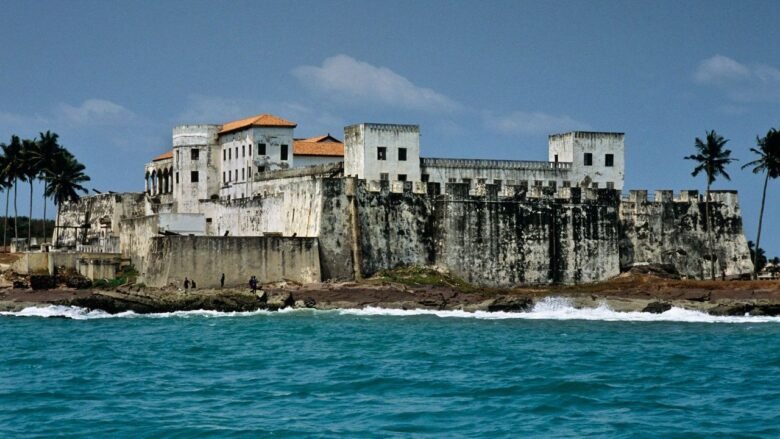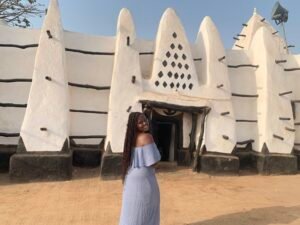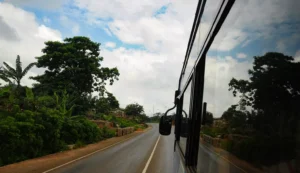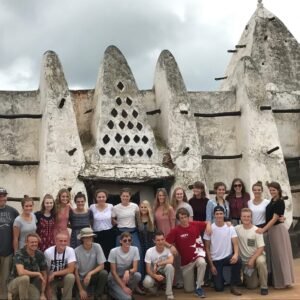Ghana’s history is as rich and layered as its culture. From ancient kingdoms and transatlantic trade to independence and modern democracy, the country’s story is etched into its castles, palaces, forts, monuments, and museums. These historical landmarks don’t just attract tourists—they help preserve Ghana’s national identity and heritage.
Whether you’re a first-time visitor or a returning traveler with a passion for African history, this guide outlines the top historical sites in Ghana that will deepen your understanding of the nation’s past.
1. Cape Coast Castle – A Legacy of Slavery and Resistance
Location: Cape Coast, Central Region
UNESCO World Heritage Site
Cape Coast Castle is one of the most important historical landmarks in Ghana. Built by the Swedes in the 17th century and later controlled by the British, the castle was a major transatlantic slave trade hub.
Highlights:
- The “Door of No Return”, where enslaved Africans were forced onto ships
- Dungeons that housed men and women in horrific conditions
- The West African Historical Museum on-site
Cape Coast Castle offers a sobering, emotional journey into the legacy of slavery, colonization, and resistance. A guided tour is recommended for historical context.
Visitor Tip: Pair your visit with a stop at the nearby Emintsimadze Palace for insights into local chieftaincy traditions.
2. Elmina Castle – Ghana’s Oldest European Structure
Location: Elmina, 15 minutes from Cape Coast
UNESCO World Heritage Site
Built by the Portuguese in 1482, Elmina Castle (São Jorge da Mina) is the oldest European building in sub-Saharan Africa. It was later taken over by the Dutch and British.
Highlights:
- Slave dungeons and punishment cells
- Governor’s quarters and watch towers
- A chapel built above the slave holding cells
Elmina Castle is equally haunting and historically vital. Like Cape Coast Castle, it was a key point in the slave trade.
Travel Tip: Visit both castles in one day to grasp their interconnected roles in Ghana’s colonial history.
3. Kwame Nkrumah Mausoleum – Ghana’s Independence Symbol
Location: High Street, Accra
This modern monument honors Dr. Kwame Nkrumah, Ghana’s first president and the father of African independence movements.
Highlights:
- Nkrumah’s tomb and personal belongings
- A museum chronicling Ghana’s path to independence
- Sculptures and historical documents on Pan-Africanism
Set in serene, manicured gardens, the site offers a peaceful space to reflect on Ghana’s 1957 independence from British rule and Nkrumah’s vision of a united Africa.
Nearby Sites: Independence Arch and Black Star Square are within walking distance.
4. Manhyia Palace – Royal Heritage of the Ashanti Kingdom
Location: Kumasi, Ashanti Region
Manhyia Palace is the seat of the Asantehene (Ashanti King)—the spiritual and cultural leader of the Ashanti people, one of West Africa’s most powerful pre-colonial empires.
Highlights:
- Palace museum with royal regalia, war artifacts, and photographs
- Exhibits on the Ashanti-British wars and colonial resistance
- Traditional architecture and oral history
The Ashanti resisted British colonization longer than most, making this palace a symbol of resilience and identity.
Don’t Miss: Time your visit with the Akwasidae Festival, held every 6 weeks, when the king appears in full regalia.
5. Fort St. Jago – Overlook of Elmina and the Coast
Location: Hilltop above Elmina Castle
Often overshadowed by Elmina Castle, Fort St. Jago was a military lookout post built by the Dutch in the 17th century.
Highlights:
- Panoramic views of Elmina town and coast
- Less crowded than nearby castles
- Insight into colonial military strategies
Its elevated location makes it ideal for photography and reflection on Ghana’s colonial architecture.
Entry Tip: Fort admission is cheaper, and tickets are often bundled with Elmina Castle.
6. Ussher Fort – Accra’s Forgotten Fortress
Location: Jamestown, Accra
Ussher Fort is one of Accra’s three major forts (alongside Fort James and Christiansborg Castle). Though less visited, it offers meaningful insight into the Dutch period in Accra.
Highlights:
- Prison cells once used during British rule
- Ongoing restoration efforts and small museum
- Former use as a detention site for political prisoners
Ussher Fort is a UNESCO-nominated site that played roles in both the slave trade and later colonial administration.
Combine with: A walking tour of Jamestown, one of Accra’s oldest districts, for a full historical experience.
7. Salaga Slave Market – Northern Ghana’s Trade Legacy
Location: Salaga, Savannah Region
Salaga was once known as the “Liverpool of West Africa” due to its role as a major slave market in the trans-Saharan trade. Enslaved Africans were brought from surrounding areas before being marched south to the coast.
Highlights:
- Slave wells and chains
- Remnants of market structures
- Oral histories from local guides
Though less developed than coastal sites, Salaga is essential to understanding the internal slave trade routes.
Best For: Travelers exploring northern Ghana or following Ghana’s slave route trails.
8. Christiansborg Castle (Osu Castle) – Seat of Colonial Power
Location: Osu, Accra
This former Danish, then British colonial administrative center has served as a seat of government and presidential office in Ghana’s post-independence era.
Highlights:
- Colonial architecture and coastal views
- Used by past Ghanaian presidents, including Nkrumah
- Now a heritage site with restricted access (request guided entry in advance)
Due to security and preservation protocols, access can be limited, but it’s a significant site for understanding Ghana’s modern political history.
9. Larabanga Mosque – Ghana’s Oldest Mosque
Location: Larabanga, near Mole National Park
Dating back to the 15th century, this Sudanese-style mosque is one of the oldest in West Africa. Made of mud and wood, it’s still in use today.
Highlights:
- Ancient Quran believed to be divinely gifted
- Unique Sudano-Sahelian architecture
- Oral traditions linking Islam to northern Ghana’s trade routes
Visitor Etiquette:
- Dress modestly
- No entry during prayer unless invited
- Women may have restricted access to certain areas
Bonus: Visit after a safari in nearby Mole National Park.
10. Ntonso and Adanwomase – Preserving Adinkra and Kente Heritage
Location: Ashanti Region, near Kumasi
While not “monuments” in the traditional sense, these towns are living museums of Ghanaian heritage.
What to See:
- Ntonso: Learn how Adinkra symbols are made using natural dyes and stamps.
- Adanwomase: Watch kente cloth weaving by local artisans.
These towns are ideal for cultural immersion and understanding non-verbal history passed through symbols and textiles.
Tip: Many workshops allow you to create your own Adinkra cloth or buy authentic, handmade kente at non-tourist prices.
Conclusion
Ghana’s historical sites are more than attractions—they’re gateways to understanding the continent’s past and the nation’s journey through slavery, colonization, independence, and cultural preservation. Whether you’re standing in the shadow of a coastal castle or learning from a local artisan in a quiet village, these places provide powerful context and meaning to your travels.
To explore responsibly:
- Use official guides for accurate history.
- Respect cultural norms and dress codes, especially at religious or royal sites.
- Support community-based tourism where possible.
With curiosity and respect, these landmarks will not only enrich your trip but connect you to centuries of African resilience and pride.




